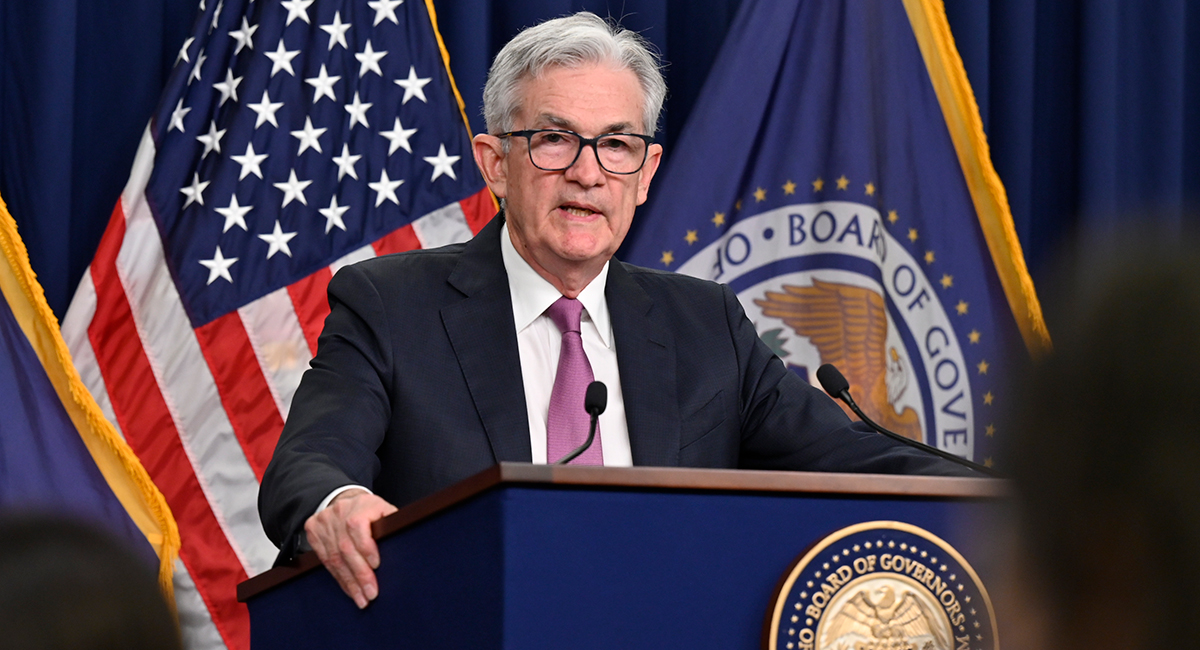If you were expecting Jerome Powell to unveil an elegant new intellectual framework for monetary policy in Jackson Hole, Wyo., last week, the Federal Reserve chairman’s speech on the need for “forceful and rapid steps to moderate demand” set you straight. But the Fed’s determination to pummel growth will only make matters worse so long as misguided fiscal policies engorge the money supply.
Welcome to the era of good-cop, bad-cop tactics from major government institutions. Fiscal and monetary policy are now working at odds to fight inflation. The Fed could crush demand by raising interest rates to stratospheric levels only to have a spendthrift White House and complicit Congress pump up consumer prices through fiscal measures that expand spending power—cash payments, subsidies, rebates, student loan forgiveness.
The Biden administration’s intellectual inconsistency borders on cynicism. The cost of its student-loan forgiveness program will wipe out any projected deficit reduction from the Inflation Reduction Act. But while the fiscal authorities congratulate themselves on their spending blowout, Mr. Powell warns of a tough road ahead.
“Reducing inflation is likely to require a sustained period of below-trend growth,” Mr. Powell said last Friday. “Moreover, there will very likely be some softening of labor market conditions. While higher interest rates, slower growth, and softer labor market conditions will bring down inflation, they will also bring some pain to households and businesses. These are the unfortunate costs of reducing inflation.”
No one doubts the part about pain, but does the Fed chairman believe that slower growth and higher unemployment will drive inflation from the economy?
In his 2020 Jackson Hole speech, Mr. Powell seemed pleased to present a new monetary-policy framework under which the Fed would tolerate inflation rates that deviated from its longstanding 2% target. Confronted with the simultaneous achievement of record-low unemployment and low inflation under the Trump administration, the Fed would pursue an inflation rate “that averages 2% over time.” Mr. Powell promised that the central bank would “remain highly focused on fostering as strong a labor market as possible,” but wouldn’t specify a numerical goal for employment “because the maximum level of employment is not directly measurable and changes over time for reasons unrelated to monetary policy.” Last year’s Jackson Hole speech offered more of the same.
If inflation were to drop below the 2% target rate next year, does anyone think the Fed would let it run that low long enough to average out the current period of rising prices? Mark me down as skeptical.
A successful monetary policy requires intellectual consistency and credibility within the larger context of political reality. The Fed tends to take its own academic models too seriously—before casting them aside under the pressure of distressing data and embracing seat-of-the-pants reasoning.
So what are we supposed to understand about the Fed’s approach to monetary policy as conveyed by Mr. Powell’s latest remarks: Economic growth is inflationary? Low unemployment is inflationary? Households and businesses must be punished for the government’s mistakes?
Perhaps the major impediment to rational thinking among Fed officials is the egocentric predicament: They have a propensity to assume that interest rates are all that matter. They ignore the benefits of pro-growth policies—low taxes and less regulation, better trade and energy policies—and refuse to acknowledge that a business-friendly environment is conducive to greater output. Yet greater output should be the goal when inflation is largely driven by lack of supply.
When asked whether fiscal initiatives or federal budget decisions will undermine their monetary policy objectives, Fed officials are apt to sidestep the question. That’s the problem: There’s no point relying on interest rates to control the money supply when government spending continues to exacerbate inflationary pressures.
Stimulus payments and income-support programs put money directly into bank accounts. Meanwhile, the Fed’s tools for fighting inflation are geared to managing the narrow component of the money supply over which the central bank exerts control. By paying interest to commercial banks and money-market funds on deposits—some $3.3 trillion in reserve balances and $2.5 trillion in reverse repurchase agreements—the Fed keeps huge volumes of cash out of the real economy.
It would be an act of intellectual courage if the Fed chairman would explain these particulars of monetary policy, which deserve more public scrutiny. And it would be cathartic to acknowledge the senselessness of monetary discipline in the face of fiscal recklessness. Sound money and sound finances must go hand in hand for the economy to regain a solid footing.









